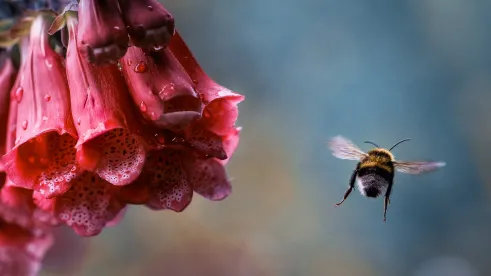On Thursday, September 22, 2016, the Fish and Wildlife Service proposed a new rule to list the rusty patched bumble bee as “endangered” under the Endangered Species Act.[1] The rule would likely mean new restrictions for farmers and other landowners in parts of the 13 states where the bees are currently thought to exist. Specifically, it would prohibit harming or harassing the bees, which could limit the use of certain pesticides and herbicides. These restrictions would be imposed despite uncertain science about current bee populations and threats facing the species. Interested parties now have until November 21, 2016 to comment on the proposed rule and underlying scientific data.
Environmentalists instigated the listing process by petitioning the Fish and Wildlife Service (FWS) in 2013 to list the species, then suing the agency in 2014 for failing to act on the petition. The rusty patched bumble bee was historically found in 31 eastern and midwestern U.S. states and in certain Canadian provinces. FWS has determined that populations have declined by over 90 percent and are now confined to less than half of their original range. The new rule would grant the species the highest protection available, designating it endangered—meaning presently in danger of extinction—throughout its entire range.
The Endangered Species Act outlines five factors that FWS must consider in listing species:
-
Present or threatened destruction, modification, or curtailment of habitat or range.
-
Overutilization for commercial, recreational, scientific, or educational purposes.
-
Disease or predation.
-
Inadequacy of existing legal protections.
-
Other natural or manmade factors affecting a species’ continued existence.
FWS found that three of these factors encouraged listing the rusty patched bumble bee. Specifically, Factor 1—habitat loss—Factor 3—harmful fungi, parasites, and bacteria—and Factor 5—expanded use of certain types of pesticides—all contributed to a drop in bee populations.
FWS specifically highlighted two widespread agricultural practices—monoculture and use of common pesticides—as contributing to the decline of the species. But it admitted that much of the scientific information supporting the listing is uncertain. Studies of pesticide effects, for example, have focused on domesticated European honey bees, not wild North American bumble bees.[2] Further, the overall toxicity of pesticides to bees is unknown.[3]
Listing the bees as “endangered” would have concrete legal consequences for landowners. The Endangered Species Act prohibits any activity that could kill, harm, or even harass endangered species. FWS anticipates that use of herbicides, pesticides, or destruction of bee habitat might violate the Act and lead to civil or criminal penalties. Additionally, listing would require FWS to designate critical habitat for the bees. While a critical habitat designation does not directly limit private activity, it creates additional hurdles for any project that involves federal permits, assistance, or funding.
Industry and agricultural groups have until November 21, 2016 to provide comments to FWS. Please contact any member of Schiff Hardin’s Environmental Group with questions about the proposed listing of the rusty patched bumble bee or the Endangered Species Act generally.
[1] 81 Fed. Reg. 65324 (Sept. 22, 2016).
[2] Id. at 65328.
[3] Id.



 />i
/>i

